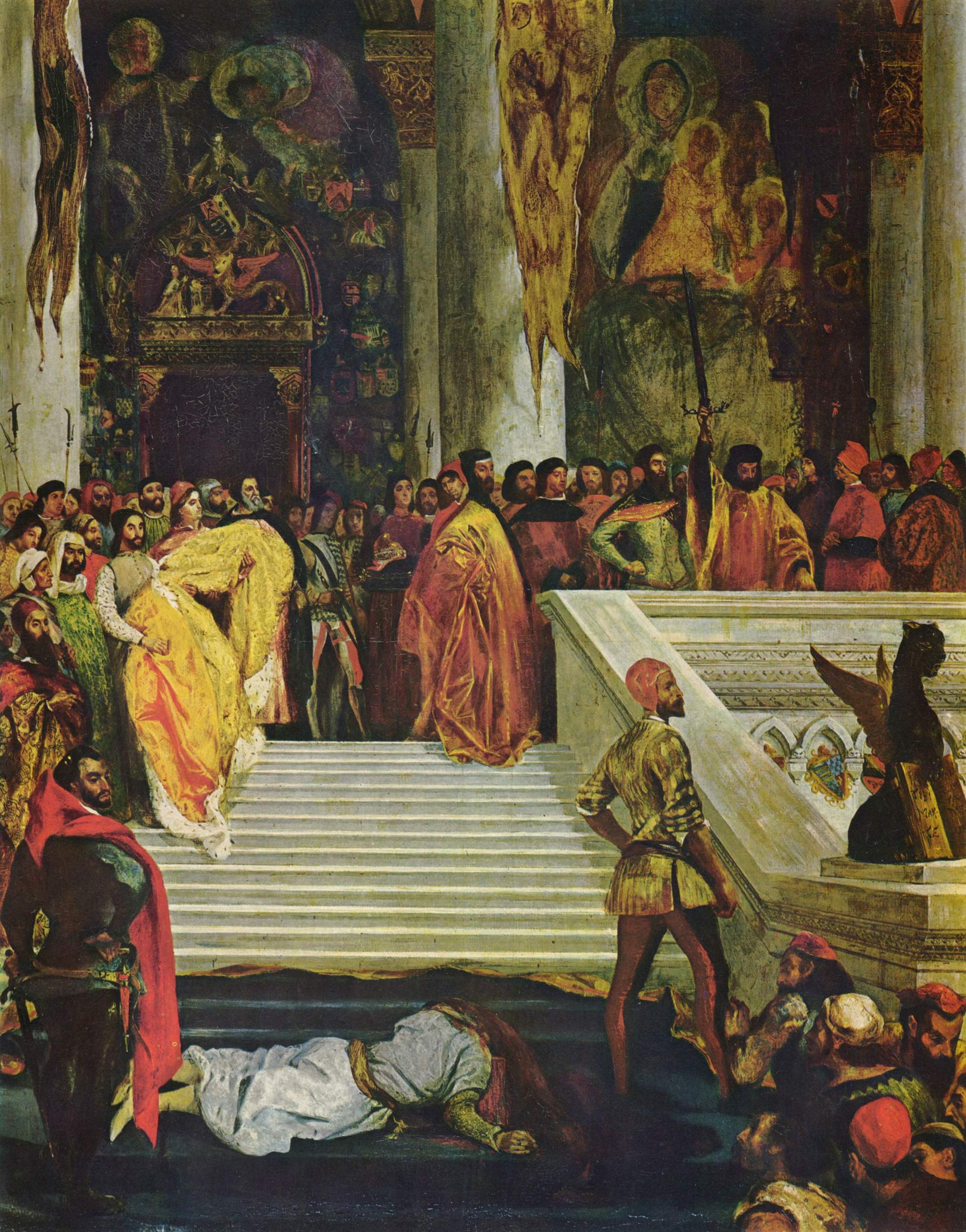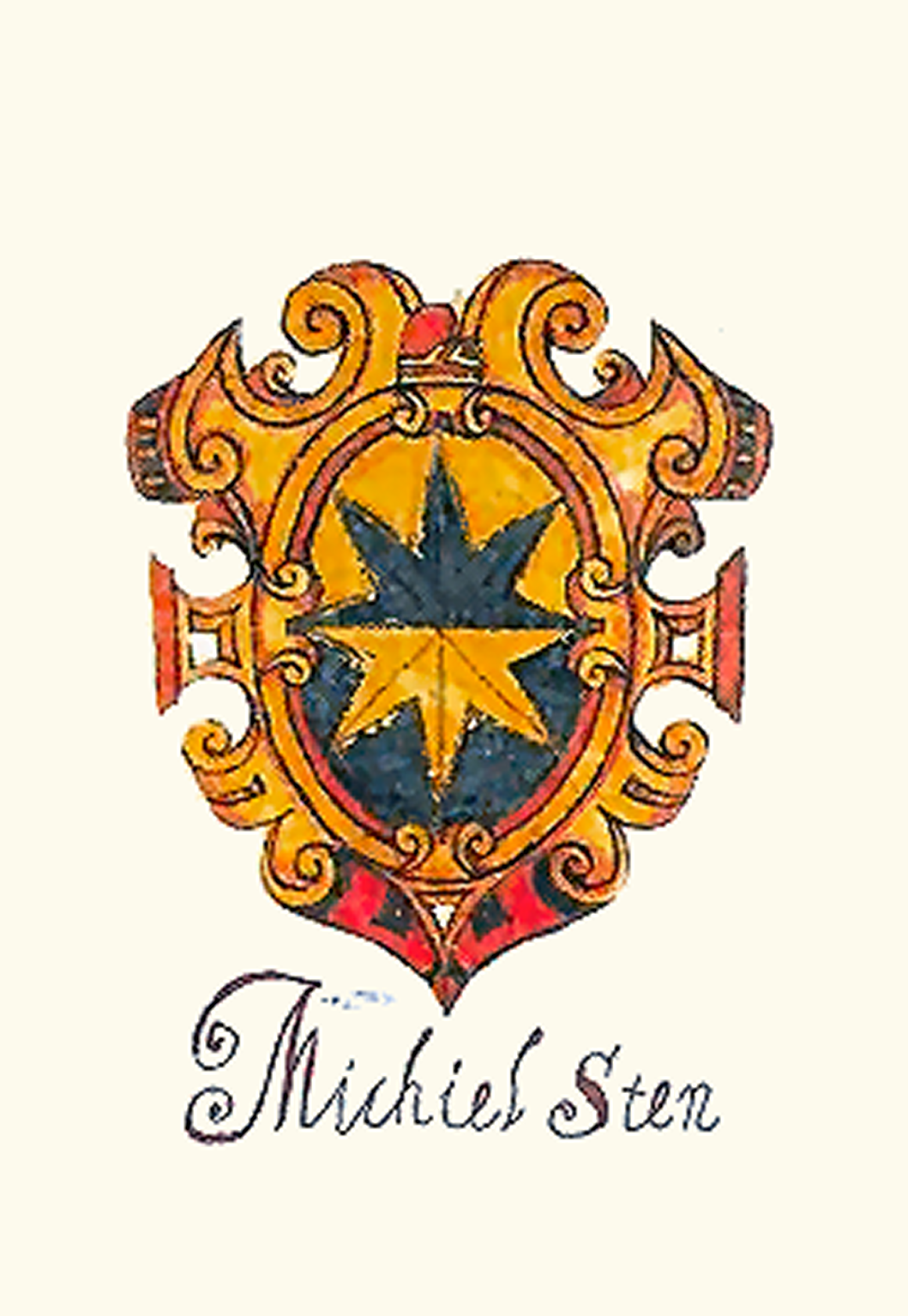|
Aluycia Gradenigo
Aluycia Gradenigo (died 1385) was the Dogaressa of Venice by marriage to the Doge Marino Faliero (r. 1354–1355). Aluycia was the daughter of Nicolo Gradenigo and related to doge Pietro Gradenigo. She was known for her beauty and her love life, and said to have had many affairs. She is known for her affair with Michele Steno, which was the catalyst for a failed coup d'etat by doge Faliero for which he was executed.Staley, Edgcumbe: The dogaressas of Venice : The wives of the doges ', London : T. W. Laurie References * Staley, Edgcumbe: The dogaressas of Venice : The wives of the doges ', London : T. W. Laurie, 1910 1385 deaths Dogaressas of Venice Year of birth unknown 14th-century Venetian people 14th-century Venetian women {{Italy-noble-stub ... [...More Info...] [...Related Items...] OR: [Wikipedia] [Google] [Baidu] |
Dogaressa
Dogaressa ( , , ) was the official title of the wife of the Doge of Venice. The title was unique for Venice: while the head of the Republic of Genoa were also called Doge, the wives of the Doges of Genoa were not called ''Dogaressa'', nor did they have such a public position. History The position of the dogaressa was regulated by the laws of the Republic, which specified which duties and rights she had, and what was prohibited for the title holder. These rights changed several times during the history of the Republic. The first bearer of the title was reportedly Dogaressa Carola in the 800s, and the last was Elisabetta Grimani in the 1790s. Position Just like the Doge, the dogaressa was crowned, made a Solemn Entry, and gave a vow of loyalty (''promissione ducale'') to the republic upon her coronation. The symbols of her rank were a golden veil and a crown in a similar shape as that of the doge. Similar to a queen, the dogaressa was provided with a household of ladies-in-waitin ... [...More Info...] [...Related Items...] OR: [Wikipedia] [Google] [Baidu] |
Marino Faliero
Marino Faliero (1274 – 17 April 1355) was the 55th Doge of Venice, appointed on 11 September 1354. He was sometimes referred to simply as Marin Falier (Venetian rather than standard Italian) or Falieri. He was executed for attempting a coup d'etat. Early life Faliero was the son of Iacopo Marin and Beriola Loredan. He had an uncle of the same name with whom he is often confused. In 1315 Faliero was one of the three heads of the Council of Ten when it was punishing the organizers of the 1310 conspiracy by Bajamonte Tiepolo. Faliero continued as a member of the council until 1320 and held the office of chief and inquisitor several times. In 1320 he was charged with Andrea Michiel to organize the killing of Tiepolo and Pietro Querini, the only two leaders of the conspiracy still at large. In 1323 Faliero was appointed captain and bailiff of Negroponte. In 1326 he was again in Venice as a member of the Council of Ten, but the following year he left for Bologna on a mission t ... [...More Info...] [...Related Items...] OR: [Wikipedia] [Google] [Baidu] |
Pietro Gradenigo
Pietro Gradenigo (1251 – 13 August 1311) was the 49th Doge of Venice, reigning from 1289 to his death. When he was elected Doge, he was serving as the podestà of Capodistria in Istria. Venice suffered a serious blow with the fall of Acre, the last Crusader stronghold in the Holy Land, to the Mamluks of Egypt in 1291. A war between Venice and Genoa began in 1294, and Venice sustained some serious losses: it lost a naval battle, its possessions in Crete were pillaged and the Byzantine emperor, Andronikos II, arrested many Venetians in Constantinople. In response, the Venetian fleet sacked Galata and threatened the imperial palace of Blachernae, but in 1298 they lost again - this time at Curzola. Eventually, in 1299 the two republics signed a peace treaty. Doge Gradenigo was responsible for the so-called '' Serrata del Maggior Consiglio'', the Locking of the Great Council of Venice. This new law, passed in February 1297, restricted membership of the future Councils only to ... [...More Info...] [...Related Items...] OR: [Wikipedia] [Google] [Baidu] |
Michele Steno
His tomb in Venice. Michele Steno (''Michiel Sten'' in Venetian Language; 1331 – December 26, 1413) was a Venetian statesman who served as the 63rd Doge of Venice from December 1, 1400 until his death. He is remembered as the ruler crucial for establishing the Domini di Terraferma, in the aftermath of the War of Padua. Biography Steno was born in Venice into a family of some, though not great, wealth, and had lived a dissolute life in youth; he and a number of other young men were at one point nearly executed by the government for covering the Doge Marino Faliero's throne with "ignominious" inscriptions against him and his spouse, Aluycia Gradenigo. He later served as proveditor of Venice, and proved a capable diplomat. In 1400 he was elected as doge as a compromise choice, since previous votes had become deadlocked. Upon becoming Doge he took to dressing like Lorenzo Celsi, who had been known for his elegance of dress. In his accession's year, Venice begun a successful ... [...More Info...] [...Related Items...] OR: [Wikipedia] [Google] [Baidu] |
1385 Deaths
Year 1385 ( MCCCLXXXV) was a common year starting on Sunday (link will display the full calendar) of the Julian calendar. Events January–December * July 17 – Charles VI of France marries Isabeau of Bavaria; the wedding is celebrated with France's first court ball. * August 6 – Edmund of Langley is elevated to become the first Duke of York in England. * August 14 ** Battle of Aljubarrota: John of Aviz defeats John I of Castile in the decisive battle of the 1383–85 Crisis in Portugal. John of Aviz is crowned King John I of Portugal, ending Queen Beatrice's rule, and Portugal's independence from the Kingdom of Castile is secured. ** The Union of Krewo establishes the Jagiellonian dynasty in Poland and Lithuania, through the proposed marriage of Queen regnant Jadwiga of Poland and Grand Duke Jogaila of Lithuania, and sees the acceptance of Roman Catholicism by the Lithuanian elite, and an end to the Greater Poland Civil War. * August 31 – King Ri ... [...More Info...] [...Related Items...] OR: [Wikipedia] [Google] [Baidu] |
Year Of Birth Unknown
A year or annus is the orbital period of a planetary body, for example, the Earth, moving in its orbit around the Sun. Due to the Earth's axial tilt, the course of a year sees the passing of the seasons, marked by change in weather, the hours of daylight, and, consequently, vegetation and soil fertility. In temperate and subpolar regions around the planet, four seasons are generally recognized: spring, summer, autumn and winter. In tropical and subtropical regions, several geographical sectors do not present defined seasons; but in the seasonal tropics, the annual wet and dry seasons are recognized and tracked. A calendar year is an approximation of the number of days of the Earth's orbital period, as counted in a given calendar. The Gregorian calendar, or modern calendar, presents its calendar year to be either a common year of 365 days or a leap year of 366 days, as do the Julian calendars. For the Gregorian calendar, the average length of the calendar year ( ... [...More Info...] [...Related Items...] OR: [Wikipedia] [Google] [Baidu] |
14th-century Venetian People
As a means of recording the passage of time, the 14th century was a century lasting from 1 January 1301 ( MCCCI), to 31 December 1400 ( MCD). It is estimated that the century witnessed the death of more than 45 million lives from political and natural disasters in both Europe and the Mongol Empire. West Africa experienced economic growth and prosperity. In Europe, the Black Death claimed 25 million lives wiping out one third of the European population while the Kingdom of England and the Kingdom of France fought in the protracted Hundred Years' War after the death of Charles IV, King of France led to a claim to the French throne by Edward III, King of England. This period is considered the height of chivalry and marks the beginning of strong separate identities for both England and France as well as the foundation of the Italian Renaissance and Ottoman Empire. In Asia, Tamerlane (Timur), established the Timurid Empire, history's third largest empire to have been ever establish ... [...More Info...] [...Related Items...] OR: [Wikipedia] [Google] [Baidu] |



